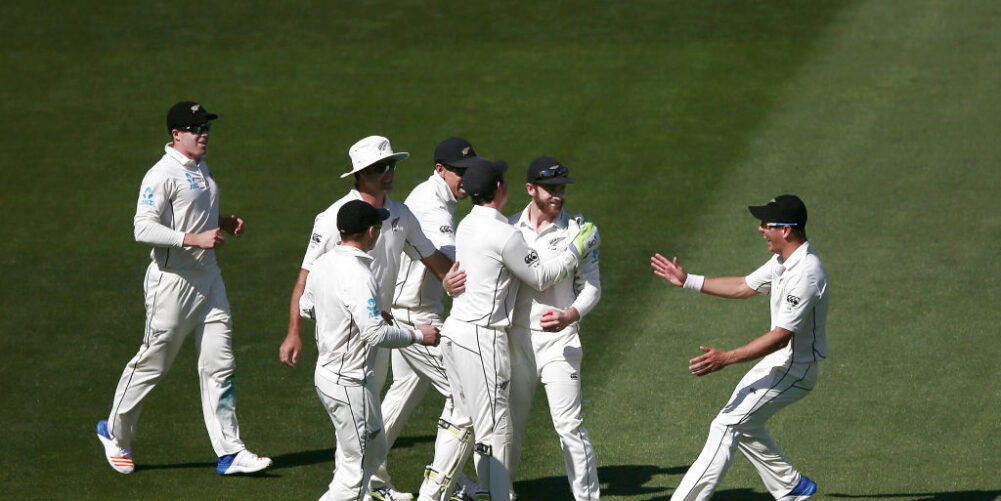By Tim Wigmore
A few years ago, it was faddish in UK politics to obsess over the Swedish model. Politicians from left and right alike would extol Sweden’s policies, the left would point to brilliant public services and social justice; the right to choice in public services – and demand that these be imported into the UK.
In world cricket today, it is the New Zealand model that other countries obsess over. For smaller Test nations and Associates countries, it is impossible to try and mimic what Australia, England and India, the sport’s economic behemoths, do; copying their approach with a scintilla of their budget seems little more than a recipe for getting stuffed.
But New Zealand hold out promise that a better way is possible, and it is possible for a small economy to overcome profound limitations – of playing numbers and personnel – to be competitive on the world stage in all three formats, and not let domestic T20 leagues hollow out their playing base.
New Zealand is a country of 4.5 million, in which cricket is a peripheral sport compared to rugby – less national sport than national religion. Its participation is 175,000 – one-sixth the number in England. And yet today New Zealand are ranked fourth in all three forms of the game – above England in both Tests and T20.
All of this is why the New Zealand model has been studied throughout the cricketing world. Cricket Ireland have unashamedly made New Zealand their model, working closing with New Zealand Cricket on understanding how a country with a smaller economy and fewer people than Ireland have been so consistent on the world stage. Ireland believe that following this template offers the best chances of being competitive in all forms of the sport.
New Zealand have never been number one in either Test or ODI cricket. Yet they have been extraordinarily good at avoiding the vagaries inherent in mid-ranking Test teams: if they have rarely enjoyed the heights of Pakistan, Sri Lanka or the West Indies, nor have they suffered the blips either. And they have consistently defied expectations in tournament cricket: out of 11 editions of the Cricket World Cup, New Zealand have reached the semi-finals seven times – a joint record with Australia. England, you may recall, have not reached a semi-final in the last six editions, going back to 1992.
Egalitarianism is at the root of New Zealand’s success. The All Blacks’ mantra – “no dickheads” – has long been at the core of the national cricket side too. There is a sense that the country’s small size, and geographical remoteness, prevents supersized egos which can impede team harmony.
On the cricket field, this egalitarianism manifests itself best in the field; recall, during a dead group game against Bangladesh in the 2015 World Cup, Brendon McCullum hurling himself into the boundary boards to turn a four into a three. Over the last 20 years, New Zealand have consistently been, along with Australia, the best fielding team in the world. The athleticism gained from rugby union – Brendon McCullum played fly half for the South Island Secondary Schools side ahead of Dan Carter – has been transported into cricket, as can be seen in New Zealand becoming world-leaders in boundary catching. Often – like during their spectacular fielding performance against South Africa in the 2011 World Cup – this fielding prowess has proved decisive on the world stage.
This egalitarianism is married with pragmatism, too. While the West Indies have been decimated by the rise of domestic T20 leagues, New Zealand have had a very different experience. They have worked to prevent scheduling conflicts with the IPL, and deliberately maintained a fairly light schedule to allow players to maximise their earnings in T20 leagues. Indeed, New Zealand Cricket actually consider the IPL a boon – because, by increasing the cash that top New Zealanders can earn playing cricket, it makes the sport more attractive to the best multi-talented athletes. Meanwhile, while other countries have lost vast swathes of cash through trying to imitate the IPL – the cancelled first season of South Africa’s Global T20 League cost the board a quarter of their reserves – New Zealand have shied away from a franchise league of their own, aware that their market simply isn’t big enough.
At a time when organised sports participation is on the wane throughout the West, New Zealand have been able to chart a different course. Last year, total participation rose by 11 per cent. This reflects New Zealand’s adroitness in using shorter and more dynamic forms of the game to introduce children to the sport, and their increased emphasis on female cricket: girls’ participation rose by 12 per cent.
Enlightened governance has made all of this possible. Sports administration is a dour subject, and yet, from FIFA to the IOC, the West Indies Cricket Board and beyond, bad administration can have devastating consequences. New Zealand Cricket have long been considered the best-run in the world, dating back to seminal reports in 1995 – when the six provincial chairs effectively voted themselves out of jobs, and were replaced by appointments determined by merit, not geography.
One manifestation of this emphasis on meritocracy over cronyism has been that Cricket New Zealand had a female president before any other Test nation. Today, half of the board are female.
It all provides a template for how mid-sized cricket nations can overcome their handicaps. The great shame is that every home Test New Zealand play costs the board NZ$500,000 – one per cent of the board’s revenue – which is why they now only play four Tests every home summer. Little wonder that the board has already declared, unabashedly, that the limited-overs are their financial and sporting future.















